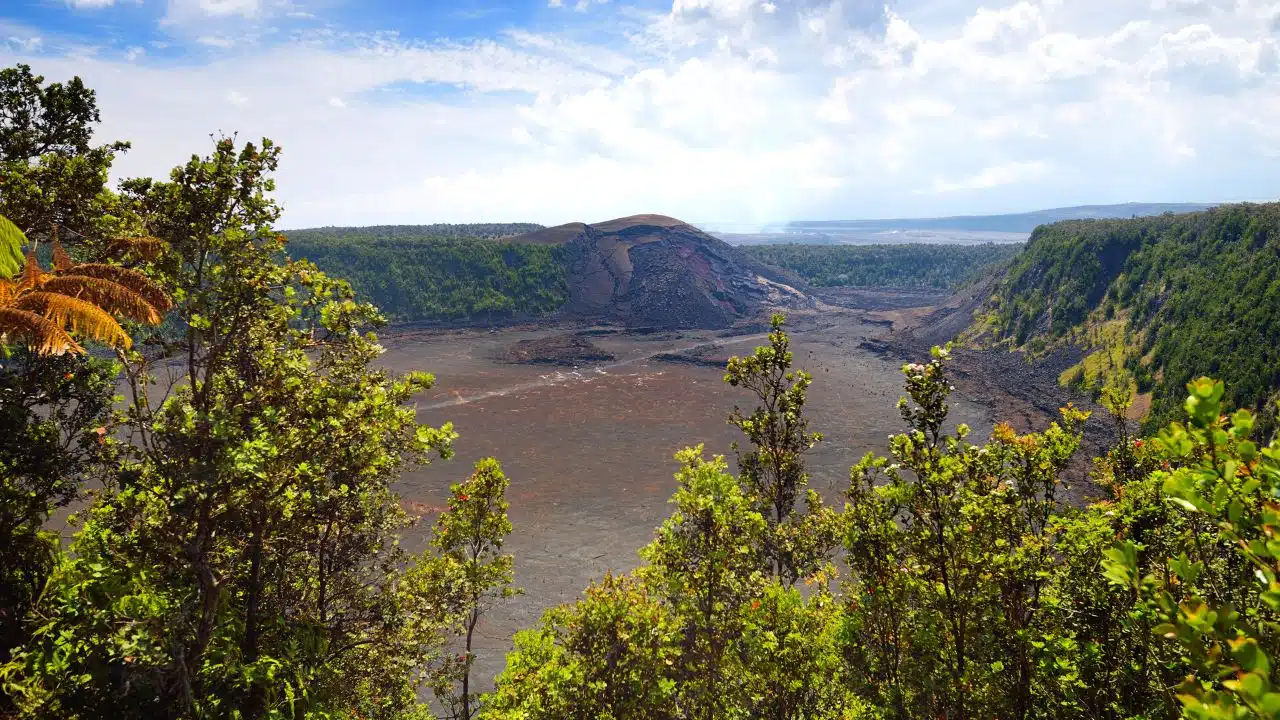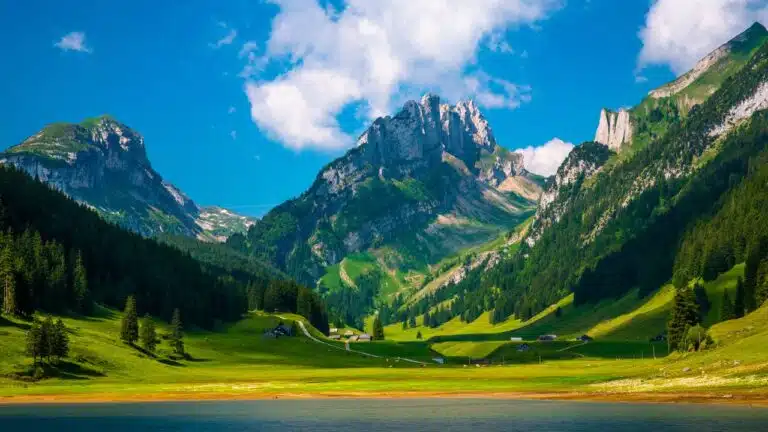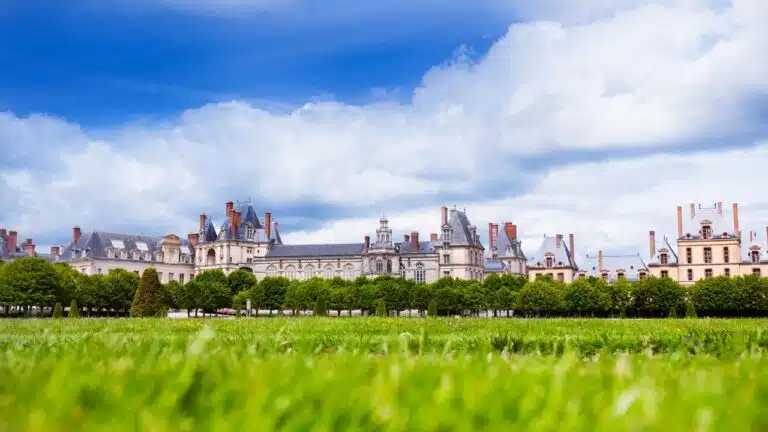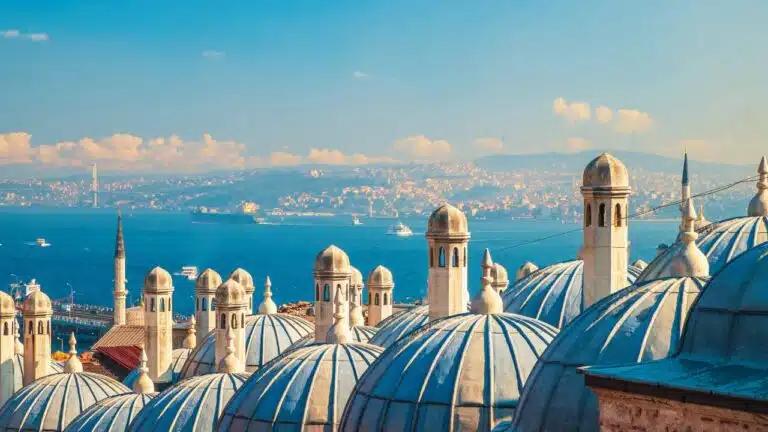In a setting unlike any other in the United States, it tracks that Hawaii’s national parks are like nothing you’ve ever seen before. Volcanic landscapes and lush rainforests flourish side by side, while historical sites and sacred locations offer deep cultural insights. Hawaii national parks are truly in a league of their own. With millions of people hopping on a flight to explore these stunning parks every year, here’s everything to know about why you should visit and how you can make your next destination Hawaii.
Table of Contents
- How Many National Parks Are in Hawaii?
- The 9 Best National Parks in Hawaii
- 1. Hawaii Volcanoes National Park, Big Island
- 2. Haleakalā National Park, Maui
- 3. Pearl Harbor National Memorial (World War II Valor, Oahu)
- 4. Kalaupapa National Historical Park, Molokai
- 5. Puʻuhonua O Hōnaunau National Historical Park, Big Island
- 6. Ala Kahakai, Big Island
- 7. Kaloko-Honokōhau National Historical Park, Big Island
- 8. Puʻukoholā Heiau, Big Island
- 9. Honouliuli, Oahu
- Ready to Visit Hawaii’s National Parks? Let Next Vacay Find You the Best Deals on Flights
How Many National Parks Are in Hawaii?
Hawaii has only two national parks. That’s right, two. Though the National Park Service recognizes nine historic sites, parks, and trails on the Hawaiian Islands, only two qualify as national parks: Hawaii Volcanoes National Park and Haleakala National Park.
But what they may lack in numbers, they rectify in marvels. Hawaii’s parks offer a peek into the islands’ rich heritage and breathtaking sights, from the sunrise on Haleakala to the bubbling summit of Kilauea.
What Island in Hawaii Has National Parks?
Despite being full of wonders, only two of the Hawaiian Islands can claim the distinction of having a national park in residence. Easily the most famous park in Hawaii, Hawaii Volcanoes National Park is located on the Big Island, while Haleakala National Park, where people flock to greet the sunrise, resides in Maui.
The 9 Best National Parks in Hawaii
Forget waiting for National Park Week. Thanks to the islands’ tropical weather, visitors can appreciate the beauty of Hawaii’s National Parks year-round. It’s time to schedule your next trip to the Aloha State, so don’t miss out on visiting these nine incredible national parks and sites in Hawaii.
1. Hawaii Volcanoes National Park, Big Island
The Big Island has numerous attractions, but Hawaii Volcanoes National Park is unique. Home to some of the world’s most impressive and active volcanoes, the park stands far above other attractions on the island—figuratively and literally. Mauna Loa comprises over half of the Big Island’s size and is taller than Mount Everest from base to summit. While the height above sea level isn’t quite as tall, traveling 0 to 13,000 feet comes with some fascinating and varying landscapes you have to see to believe.
Sandy beaches and rugged sea cliffs bleed into unique lava fields and stunning rainforests full of ecological wonders. With over 335,000 acres, there’s a lot to take in, but thankfully, the park makes seeing it all easy. Over 150 miles of winding trails and scenic drives explore the shifting landscape of Hawaii Volcanoes National Park. Visitors can walk through a lava tube, hike along stunning craters, and peek at bubbling lava lakes—but only from a safe distance.
Many people visit Hawaii Volcanoes National Park hoping to see Kilaeau in action. However, it’s worth sticking around to uncover countless hidden gems beyond Kilaeau’s summit. And for those who can’t drag themselves away, you don’t even have to leave the grounds. Book a stay at the Volcano House Hotel, and you can find yourself treated to light shows from the caldera at night and striking views during the day.
2. Haleakalā National Park, Maui
Watching the sunrise over Haleakala, it’s not hard to imagine that the demi-god Maui could wrangle the sun and slow its descent across the sky. From Haleakala’s peak, anything feels possible—perhaps because Haleakala National Park is more otherworldly than just legend would suggest.
Colorful desert landscapes give way to lush tropical jungles and gushing waterfalls, all bursting with unique flora and fauna. Haleakala is home to more endangered species than any other national park, including Hawaii Volcanoes National Park. It hosts over 100 in total, including the flowering ‘ahinahina, endemic to Haleakala’s slopes, and the Hawaiian hoary bat, the state’s only native mammal.
Hiking trails take visitors on winding paths throughout this iconic Hawaii national park. Swirling volcanic landscapes of red-dusted mounts lead to spectacular views of the Haleakala crater while forested jungle paths pass fruit-laden trees to end before towering sacred waterfalls.
The park’s landscapes speak for themselves, presenting a scene as breathtaking as the colorful skyscape. Make your reservations for the morning, then plan to spend the day drinking in one unbelievable sight after another.
3. Pearl Harbor National Memorial (World War II Valor), Oahu
History changed forever on December 7, 1941. On that date, over 2,400 soldiers, sailors, and civilians died in the attacks on Pearl Harbor, plunging the US into war and marking it forever as a “date that will live in infamy.” Today, that date lives on at the World War II Valor, redesignated as the Pearl Harbor National Memorial in 2019.
But while names may change, history certainly doesn’t, and the events of the past remain all too fresh in the present. Air hangers brandish old scars, and older survivors recount harrowing tales of a peaceful morning thrown into chaos in seconds. The remains of the USS Arizona, one of the first battleships hit, still rest in the shallows of Pearl Harbor, visible through the glittering blue waters.
The Pearl Harbor National Memorial takes visitors on a journey through one of the most pivotal moments in US history. That story is told in parts through five historical sites: Pearl Harbor Visitor Center, USS Arizona Memorial, USS Missouri Battleship Memorial, Pacific Fleet Submarine Museum, and the Pearl Harbor Aviation Museum. Beautiful and symbolic, the memorial stands as a reminder of the devastation of war, the brutal struggles for survival, and the pinpoints of hope that refuse to be extinguished.
4. Kalaupapa National Historical Park, Molokai
Travelers hoping to experience the Kalaupapa National Historical Park don’t exactly have it easy. Visitors must brave three miles of rugged terrain, traversing cliffs that tower as high as 3,900 feet, with sweeping views out over the Pacific Ocean, to arrive at the remote town of Kalaupapa.
Cradled within the world’s tallest sea cliffs, the park is a site of rare beauty and singular tragedy. Characterized by its present peaceful aura, the park’s sad history is made all the more compelling and heartbreaking. Rather than a place of sanctuary, it was once a prison for over 8,000 people. Men, women, and even children affected by Hansen’s Disease were exiled to Kalaupapa between 1866 and 1969. Forced to live out the rest of their lives in isolation, these people were separated from their families and largely shunned by the outside world, save for two kind souls. Saint Damien and later Saint Marianne Cope willingly left the outside world to care for the abandoned people of this community.
Today, the historical park highlights much more than the settlement’s history. The park preserves geological wonders and stunning fauna, from crater lakes and lush valleys to green sea turtles and monk seals. So whether you go for nature, science, or history, Kalaupapa is a destination well worth the trip—even considering it’s made on muleback.
5. Puʻuhonua O Hōnaunau National Historical Park, Big Island
In not-so-ancient Hawaii, breaking a kapu (sacred law) meant almost certain death. Unless the lawbreaker could reach a puʻuhonua (place of refuge) before capture. Desperate individuals fled persecution, dodging pursuers and braving dangers to seek absolution. Only after an absolution ceremony would one who had broken a kapu be accepted back into society. Now, visitors to the storied grounds of Puʻuhonua o Hōnaunau National Historical Park no longer seek absolution but a glimpse into the traditional native Hawaiian culture that makes the islands so unique.
Separated by a Great Wall and watched over by wooden Kiʻi lies the Royal Grounds. As you enter the grounds, lofty coconut palms sway overhead, part of the royal coconut grove commemorating past ali’i (kings). Beyond the copse of trees, the grounds sweep outward to encompass significant cultural sites, from Keone‘ele Cove, where canoes for Ali’i used to land, to fish ponds and a Hālau waʻa (canoe house).
The safe haven and royal complex juxtapose two very different but intricately tied elements of Hawaiian culture, painting vivid stories of a nation’s history.
6. Ala Kahakai, Big Island
The one national historic trail in Hawaii, Ala Kahakai, spans 175 miles of ancient paths first tread by Polynesians 1500 years ago. Stretching from the northernmost point of Hawaii at Upolu Point, the trail winds along the entire west coast to Ka Lae, or South Point, and ends at Wahaʻula Heiau on the coast of Hawaii Volcanoes National Park.
Initially, only the section spanning from Upolu Point to Kailua was named Ala Kahakai. Eventually, the name came to encompass the entire trail. As it never strays too far from the sea, “trail by the shoreline” is a fitting moniker. The coast catches the eye with vibrant blue hues, black lava cliffs, and even the occasional sighting of dolphins and humpback whales in the distance.
But just like the ocean, this national historic trail is significant in what it encompasses. The network of trails traverses historical and cultural landmarks, from wahi pana (celebrated places) to ahupua‘a (traditional land divisions). Following in the footsteps of ancient Hawaiians will lead visitors through old Hawaiian settlements, past ancient fishponds, and, of course, along miles of breathtaking shoreline. Visitors can choose a single section or multiple areas of the Ala Kahakai National Historic Trail to explore for a small taste of the Big Island’s beauty and history.
7. Kaloko-Honokōhau National Historical Park, Big Island
For all its beauty, the rugged Kona coast doesn’t lend itself to an easy life. Yet despite the hot and arid environment or the barren fields of past lava flows, early Hawaiian settlements thrived. And it’s inside Kaloko-Honokōhau National Historical Park that visitors learn how.
Named after two ancient ahupua‘a, Kaloko and Honokōhau, the park covers a plethora of ancient cultural treasures. The ruins of homes and heiau dot the landscape alongside striking features like petroglyph fields and the freshwater Queen’s bath. But the most impressive feature has to be the two Hawaiian fishponds. In these fishponds, native Hawaiians raised fish to feed their entire communities.
Surrounding the cultural and historical sites are striking beaches and impressive wildlife like native birds and Hawaii’s beloved honu. Several trailheads loop their way through and around the park, highlighting different features and allowing visitors to dive deep into the history and significance of this special place.
8. Puʻukoholā Heiau, Big Island
If nations are born, then they must have a birthplace. For the Kingdom of Hawaii, that birthplace was Puʻukoholā Heiau. Built by King Kamehameha at the urging of a kahuna (priest), the luakini heiau (temple for human sacrifice) was dedicated to his family’s god of war. Constructed of lava rock said to come from the Polulu Valley, the heiau was more a fortress than a temple. Here, King Kamehameha took his first step toward unifying the Hawaiian Islands by slaying his rival, Keōua, who became the first sacrifice on the temple’s altar.
Strolling through the visitor center today will take you back in time with intriguing exhibits sprinkled throughout the small museum accompanied by fascinating videos. But to truly appreciate the historical significance of Puʻukoholā Heiau, one must walk in the footsteps of kings.
Visitors can wander the 77-acre national historic site that encompasses the stone heiau and ancient Hawaiian ruins of Mailekini Heiau, a temple turned into a fort, and Hale o Kapuni, a submerged heiau dedicated to the shark gods. Puʻukoholā even means “hill of the whales,” and whale season finds some here in hopes of glimpsing the magnificent creatures in the distance.
Known as Hawaii’s last heiau, Puʻukoholā is a striking look into Hawaii’s past and a nation’s birth.
9. Honouliuli, Oahu
Honouliuli is not yet open to the public, but it’s already making its way onto lists just like this one. Established just a few years ago in 2015, Honouliuli National Historic Site will be open to the public in the future at an undetermined date. But, when the site opens, it will confront the hard part of American history during WWII: internment camps.
Mostly forgotten after the war, the grounds of this particular internment camp were leased to a sugar company and later bought by the Monsanto Corporation. The sugar cane fields and vegetation quickly erased any lingering signs the camp ever existed. However, a recent rediscovery in 2002 led to the site’s historic establishment, and it’s now undergoing development and planning stages. Built on the grounds of Hawaii’s longest-running internment camp, Honouliuli National Historic Site will shed light on the experiences of the nearly 4,000 prisoners held captive during the worst years of the war.
Ready to Visit Hawaii’s National Parks? Let Next Vacay Find You the Best Deals on Flights
Flying to Hawaii to see its amazing national parks in person shouldn’t be as harrowing a journey as getting to Kalaupapa National Park. Want to make it easy, fun, and affordable? Sign up for Next Vacay.
Next Vacay makes it so you don’t even have to lift a finger. Just sign up, enter your airport, and let the team at Next Vacay go to work. With deals delivered right to your inbox and hundreds of dollars in savings, you’ll be pocketing extra change in no time. Get ready for more vacations, better experiences, and doing what you love, all because you decided to travel the easy way. It’s time to pack up your old flight tools and fly with Next Vacay.



